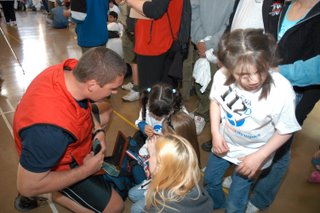Using the Concept2 Indoor Rowing Machine
>Dear Xeno,
> I saw your advice on a rowing forum (and you
> recommended looking at your
> gorow.com site) and wondered if, with your
> experience, you might give me
> some tips. I am 17 yrs old, female and 5' tall with
> kind of short legs for
> my height, so I don't have a natural body type for
> rowing. I am strong and
> aerobically fit, but can't seem to improve my ERG
> times much. The tips I
> get from coaches seem to work much better for the
> taller rowers than they do
> for me. As a matter of fact, when I do what they
> tell me, my times just go
> way up. My best time is only 8:40. I can only even
> get that by rowing with
> a vent setting of between 8 and 10 with a stroke
> rate of around 32 or 33.
> If I drop the vent setting even to 7, I have to keep
> a stroke rate of 36 or
> 38 to even keep a time of 8:40. You mentioned in
> your post to increase the
> torque. I'm not sure what that is, or how one does
> that.
>
> Thanks for any advice that you can give me.
>
> K.
Hello K.
I don't race a 2k at lower than six or seven.
Anything less I do not get enough "torque". The
computer of the rowing machine calculates the change
in speed of the flywheel.
Your strength will always be torque. However, whether
you are five feet or seven feet tall, the technique
does not change.
With speed work you will be able to rate higher. Your
base cadence of 33 is good.
Your choice of resistance is therefore good.
XENO
Xeno Muller, Olympic gold and silver medalist, indoor rowing, rowing technique.















